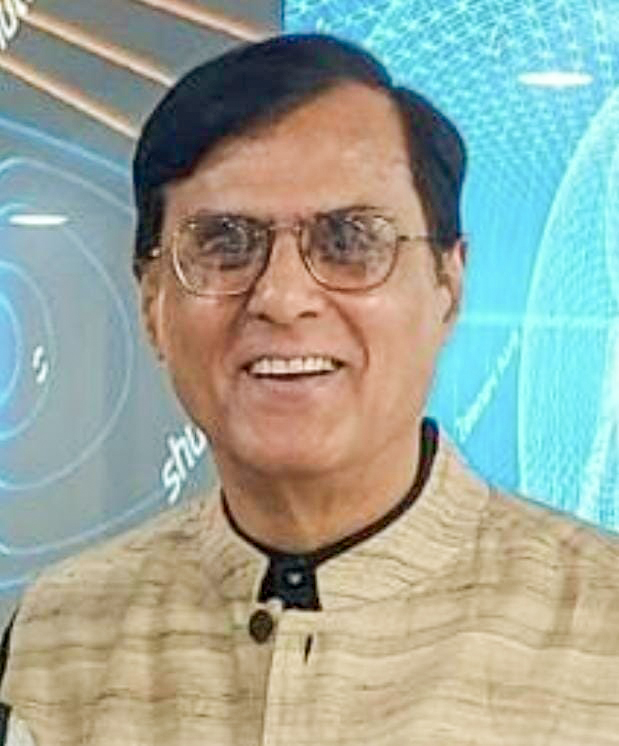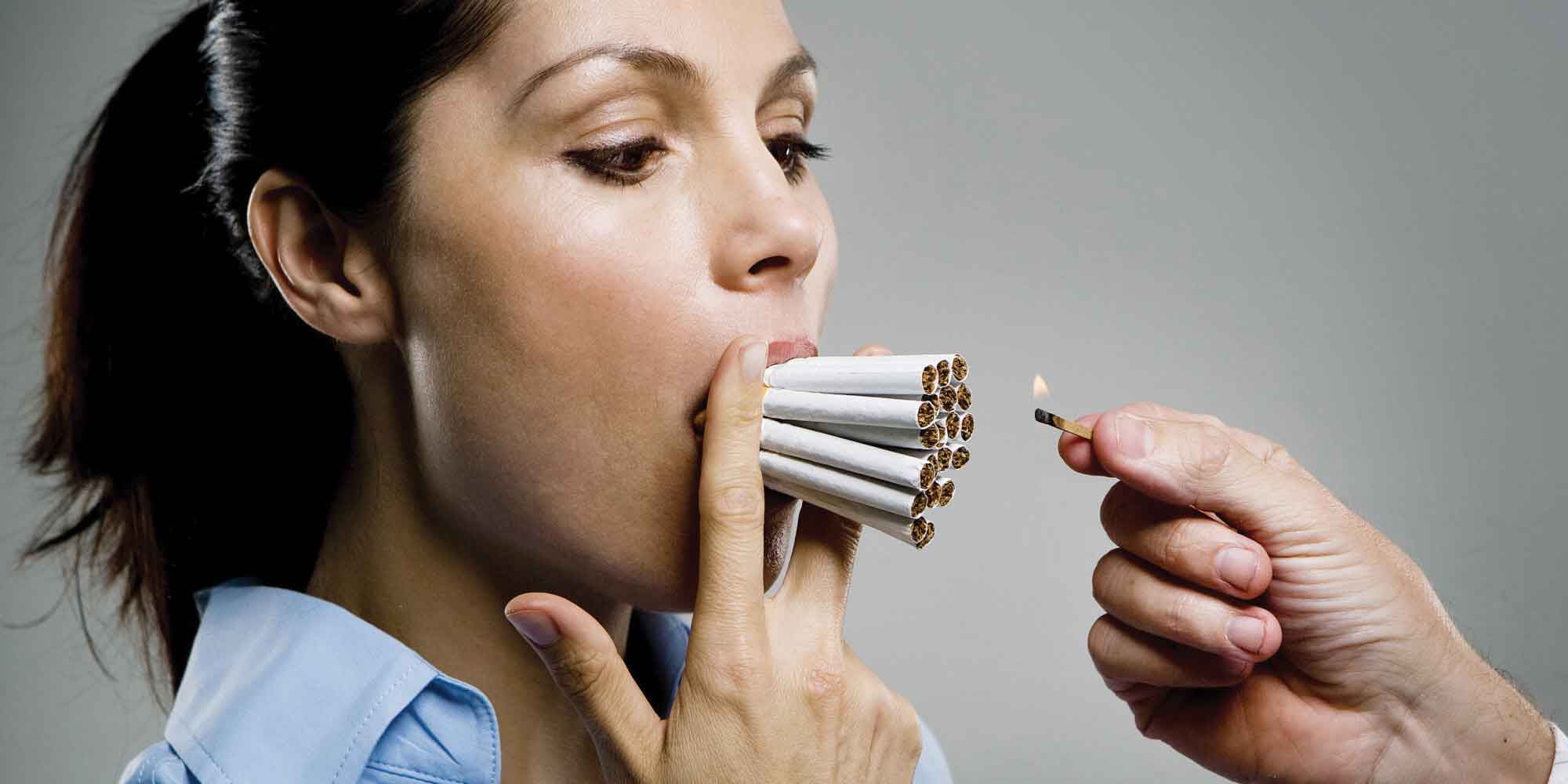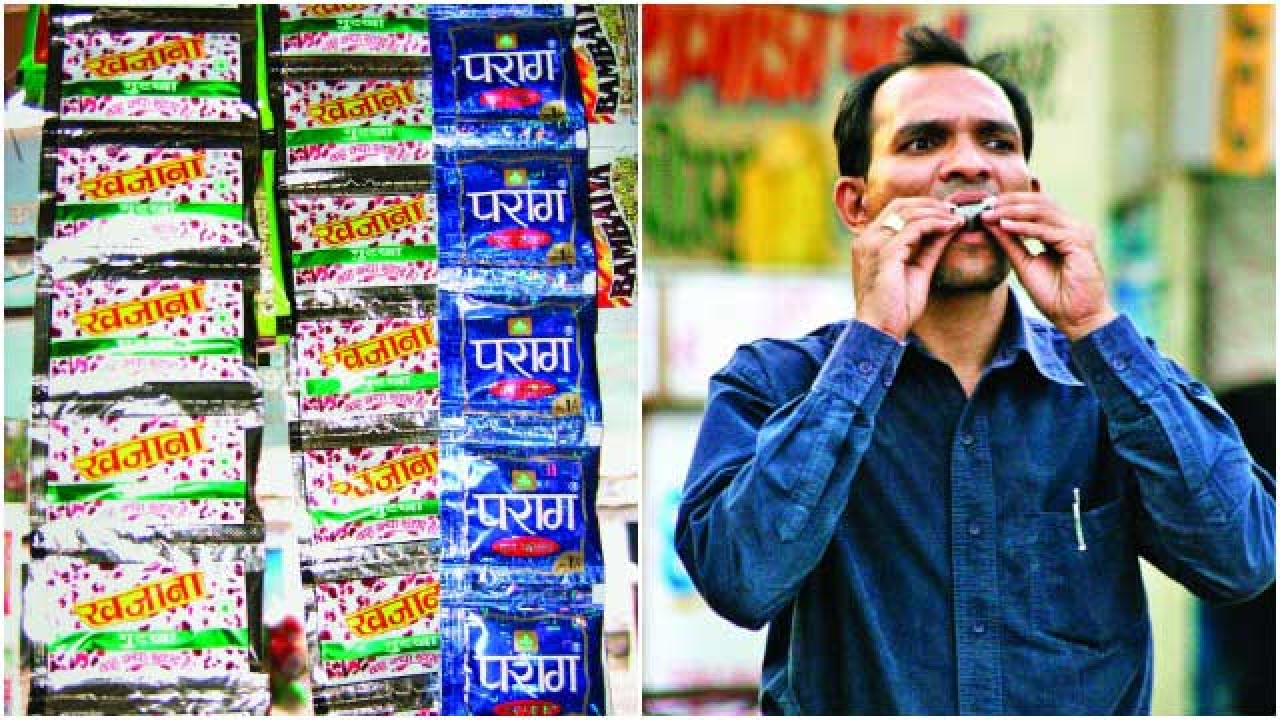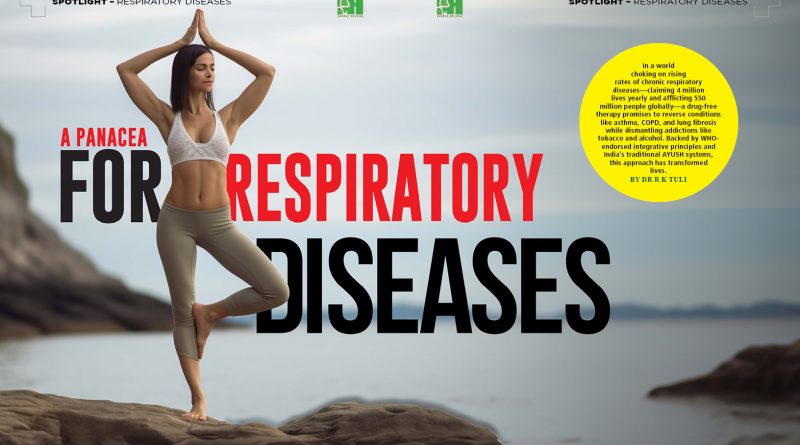A Panacea for Respiratory Disease
 In a world choking on rising rates of chronic respiratory diseases—claiming 4 million lives yearly and afflicting 550 million people globally—a drug-free therapy promises to reverse conditions like asthma, COPD, and lung fibrosis while dismantling addictions like tobacco and alcohol. Backed by WHO-endorsed integrative principles and India’s traditional AYUSH systems, this approach has transformed lives.
In a world choking on rising rates of chronic respiratory diseases—claiming 4 million lives yearly and afflicting 550 million people globally—a drug-free therapy promises to reverse conditions like asthma, COPD, and lung fibrosis while dismantling addictions like tobacco and alcohol. Backed by WHO-endorsed integrative principles and India’s traditional AYUSH systems, this approach has transformed lives.
By Dr R K Tuli
Despite remarkable strides in medical science over recent decades, a troubling paradox persists: the global incidence of respiratory diseases—both acute and chronic—is escalating at an alarming rate, with no respite in sight. Official statistics paint a grim picture. Since 1990, the burden of Chronic Respiratory Diseases (CRDs) has surged by nearly 40 per cent worldwide. Today, approximately 550 million people—roughly 7 per cent of the global population—live with a chronic respiratory condition, facing heightened risks of premature morbidity, prolonged suffering, and untimely death. Annually, CRDs claim 4 million lives prematurely, ranking them as the third leading cause of mortality globally, trailing only cardiovascular diseases and cancer. In India alone, the toll is staggering: in 2016, Bronchial Asthma affected nearly 40 million individuals, while Chronic Obstructive Pulmonary Disease (COPD) burdened 60 million—a combined load of 100 million cases in a single nation.
What’s particularly striking is the geographic disparity. High-income regions, with access to advanced healthcare, paradoxically exhibit a higher prevalence of CRDs compared to low-income areas. Global health authorities, including the World Health Organization (WHO), project that this trend will only intensify in the coming decades, driven by a confluence of factors: tobacco smoking, rampant air pollution, automobile exhausts, dust particles, biomass fuel combustion, occupational exposure to chemicals, frequent respiratory infections, and pulmonary hypertension. These risk factors vary by geography, culture, age, and gender, yet their cumulative impact is universal—respiratory health is under siege.
Respiratory diseases encompass a broad spectrum of conditions affecting the airways, lungs, and the neuromuscular mechanics of breathing. This umbrella term includes sinusitis, bronchitis, bronchial asthma, COPD, pneumoconiosis, sarcoidosis, interstitial lung disease (ILD) or idiopathic lung fibrosis (ILF), sleep apnoea, and lung cancer, among others. These ailments are often exacerbated by infections—viral, bacterial, or fungal—further complicating their management. Conventional medical treatments, such as bronchodilators, corticosteroids, and oxygen therapy, offer temporary relief by opening air passages, easing shortness of breath, and managing symptoms to improve daily functioning. Yet, these interventions are palliative at best. They come laden with side effects—ranging from mild (e.g., tremors, dry mouth) to severe (e.g., osteoporosis, cataracts, adrenal suppression)—and long-term hazards that compound morbidity. Despite the best efforts of modern medicine, CRDs remain incurable, progressively eroding quality of life and posing a formidable threat to human wellness.
The WHO’s Warning and the Call for a New Approach
The WHO has sounded a clarion call: “Unsafe medication practices and medication errors are a leading cause of injury and avoidable harm in health care systems across the world.” This stark warning underpins the third Global Patient Safety Challenge, themed Medication Without Harm. It echoes the timeless dictum of Hippocrates, the Father of Medicine: “Primum Non-Nocere”—First, Do No Harm. Yet, no current medical procedure fully adheres to this principle. Pharmaceuticals, while life-saving in acute scenarios, often trade short-term relief for long-term risks, leaving patients caught in a cycle of dependency and decline.

This article emerges from a deeply personal yet professionally validated conviction: the integration of conventional medicine with drug-free, traditional modalities—collectively termed Holistic MediCare—offers a transformative solution. Rooted in my decades-long practice as a physician and former Chief Consultant of Holistic Medicine at Indraprastha Apollo Hospitals and the Indian Air Force, this approach aligns with WHO recommendations, as adopted in India’s National Health Policy, to complement the best of medical science with the wisdom of AYUSH (Ayurveda, Yoga, Unani, Siddha, and Homeopathy) systems. The result? A natural, harmless, highly predictable, reproducible, and sustainable reversal of respiratory ailments—and beyond—at all stages and ages.
Holistic MediCare: A Science of Wholeness
Holistic MediCare transcends the limitations of symptom-focused medicine by treating the individual as an integrated whole—body, mind, and spirit. It leverages drug-free modalities from officially recognized traditional systems, avoiding the pitfalls of “mixopathy” (the haphazard blending of incompatible practices). By restoring the body’s disturbed homeostasis—the delicate balance of physiological processes—this approach addresses the root causes of disease, not merely its manifestations. It reverses tissue damage, mitigates inflammation, and fosters regeneration, paving the way for positive health and total wellness.
Consider the scope of its impact. Respiratory diseases like asthma, COPD, and ILD often coexist with comorbidities—hypertension, diabetes, obesity, chronic pain, or mental health challenges. Holistic MediCare doesn’t isolate the lungs; it heals the entire system concurrently. Testimonials from eminent patients—senior surgeons, gynaecologists, and everyday individuals—attest to its efficacy. For instance, a senior surgeon, once a heavy smoker and binge drinker, not only quit his addictions but regained vitality and equanimity after treatment at my SOHAM clinic. Another patient, Latish Malhotra, shed a 24-year habit of consuming 15-20 packets of gutka daily within a week of laser therapy and counselling, declaring himself free from “this poison.”

Tackling the Tobacco Menace
Tobacco consumption—whether smoked, chewed, or inhaled—stands as the primary risk factor for CRDs and a host of other diseases, from cardiovascular disorders to cancers. Yet, its grip on humanity is not a moral failing but a neurochemical one. Addiction arises from a disruption in the brain’s neurotransmitter balance, where nicotine delivers fleeting relief from stress, boosts pleasure, or bolsters social standing. Sophisticated marketing by tobacco companies amplifies this allure, embedding positive memories that reinforce dependency.
Conventional medicine offers no reliable, lasting antidote to tobacco or substance abuse. Nicotine replacement therapies, antidepressants, or rehabilitation programs often falter, with relapse rates stubbornly high. Holistic MediCare, however, bridges this gap. By synergizing laser-acupuncture, reflexotherapy, hypnosis, lifestyle adjustments, nutritional guidance, and relaxation techniques, it achieves instant success in over 90 per cent of willing patients. This protocol alleviates withdrawal symptoms—stress, anxiety, cravings—within days, “erasing” past associations with tobacco and restoring a healthy neurotransmitter equilibrium. Patients report not just cessation but an aversion to tobacco, alongside newfound confidence and self-esteem.

Take Arun Tulsian, a 50-year-old who chewed 40-50 packets of gutka daily for 30 years. By age 50, he faced precancerous oral fibrosis, restricting his mouth opening to one finger’s width, alongside hypertension, diabetes, obesity, chronic fatigue, severe back pain, and immobility. After four months at SOHAM, he declared, “I’ve been given a new life. I’ve quit gutka completely, my mouth opens freely, my taste buds are back, and I’m pain-free, full of energy, and practicing yoga daily as Dr Tuli advised.” His transformation exemplifies holistic medicine’s power to reverse not just addiction but its cascading health consequences.
The Rewards of Quitting
The need to abandon tobacco cannot be overstated. Health education must emphasise its perils:
Self-Poisoning: Each puff or chew delivers toxins that degrade organs.
Premature Aging: It accelerates wrinkles, frailty, and disability.
Sexual and Reproductive Harm: It leads to early impotence, infertility, and birth defects.
Disease and Death: It vastly increases risks of lung disease, diabetes, heart attacks, strokes, and cancers—especially of the mouth, throat, and oesophagus.
Quitting saves more than health—it preserves finances. The cost of tobacco, coupled with inevitable medical bills from prolonged illness, drains resources. Early, painful death compounds the tragedy. Yet, cessation at any stage reverses damage over time. Within a year, lung function improves; within a decade, cancer risks plummet. Combined with a healthy lifestyle, individuals can reclaim decades of vibrant living—for themselves and their families.

A Case for Scientific Validation
The evidence is compelling but anecdotal. Testimonials from diverse patients—Dr Ashima Vikram, whose surgeon husband quit smoking and drinking; Alla Shaurique, whose husband overcame “morbid alcoholism”; Sudarshan Sharma, who ditched 25 daily cigarettes after two sessions—highlight consistent outcomes. These stories demand rigorous exploration. Large-scale pilot projects, backed by peer support, are essential to establish scientific credibility, refine protocols, and integrate Holistic MediCare into mainstream practice. Its alignment with WHO’s Health For All vision and India’s Vedic motto, “Sarve Bhavantu Sukhinah – Sarve Santu Niramaya” (May all be happy, may all be free from illness), positions it as a potential panacea—not just for CRDs but for all conventionally incurable conditions.
Restoring Medicine’s Glory
Adopting Holistic MediCare enhances practitioners’ efficacy, offering safer, accessible, cost-effective care. It promises professional satisfaction and a return to medicine’s noble roots—where healing transcends harm. For India, it paves the way to Swasth Bharat, Ayushman Bharat, Vi ksit Bharat and Vishva Guru Bharat. As a holistic physician, I urge my peers to rise above specialty silos, embrace this integrative paradigm, and wage a total war against disease and addiction. The rewards—health, hope, and harmony—are immense.
(The author is former Chief Consultant Holistic Medicine, Indraprastha Apollo Hospitals & Indian Air Force, and Founder, Society For Holistic Advancement of Medicine (SOHAM)

